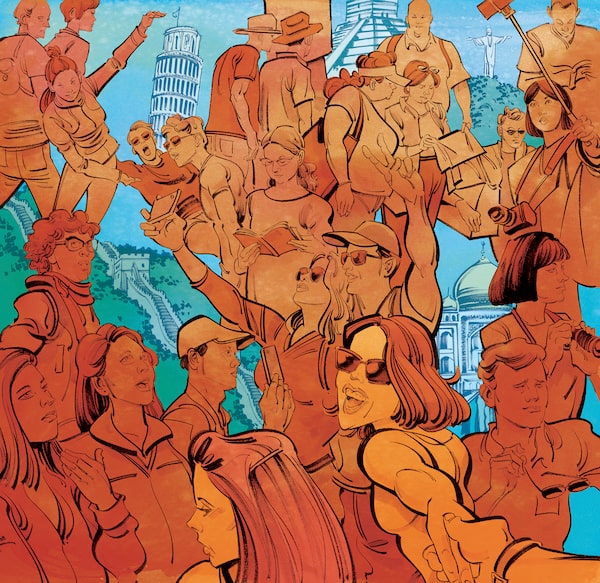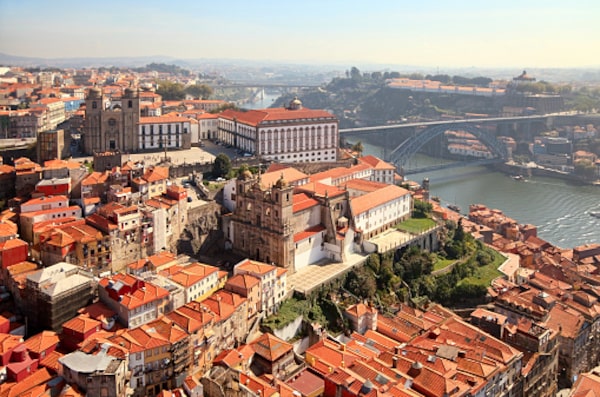
kagan mcleod/The Globe and Mail
A Croatian economist once explained to me why the country’s tourism boom wasn’t all it was cracked up to be. Sure, the revival of a once-thriving industry provided a welcome boost to a struggling economy, attracting badly needed foreign investment. But unemployed Croatians lured to the hot spots on the Dalmatian coast soon discovered that many of the available jobs were seasonal and low-paying, leaving imported labour to fill vacancies. A big chunk of the revenues went to major players in the global travel game, and scarce public resources were diverted that could have been steered toward broader economic reforms.
And all that was before the dark side of modern mass tourism became painfully visible to the inhabitants of Dubrovnik, one of the country’s biggest draws. It happened in part thanks to the enormous popularity of Game of Thrones, which brought devoted fans flocking to the small medieval port to gawk at locations used in the blockbuster TV series. The number of visitors soared by 53% in the first three months of this year alone from a year earlier—and that doesn’t include the thousands disembarking daily from cruise ships.
Officials are now capping the number of ships (two) and total passengers (5,000) allowed into port daily, and keeping tabs on crowd size. They've also slashed the number of souvenir stands and outdoor restaurant seating. But long-time residents, who endured a bombardment, siege and looting during Croatia's fight for independence in the early 1990s, fret that their UNESCO World Heritage site has already become a theme park from hell.
Global tourism's rapid expansion is toting plenty of baggage to other markets as well. A growing number of travel magnets have joined Dubrovnik in concluding that the negative aspects—huge crowds, overwhelmed services, soaring housing costs and other economic distortions, cultural insensitivity, environmental damage—outweigh the positives. In an effort to calm the waters while still keeping vital tourist dollars flowing, officials from Barcelona to Bali are levying more taxes and fees, limiting numbers, erecting barriers, cracking down on illegal home rentals and enforcing public standards of behaviour.
It might not have come to this if governments had done a better job of preparing for the inevitable impact of the tourist hordes they have so eagerly pursued in an effort to generate investments, jobs and tax revenues, and to improve deteriorating trade balances. It's a shame travellers and residents now have to pay the price for years of greed and neglect.
Tourism has ballooned with the arrival of cheaper air travel, more affluent consumers and low-cost accommodation stemming from the explosive growth of Airbnb and other online travel platforms. The burgeoning travel and tourism sector last year accounted for 10.4% of the world economy, 27% of services-related exports and one in 10 jobs, according to the latest research from the World Travel and Tourism Council, the industry lobby group. And it's only going to become a bigger economic driver, as millions more people with rising incomes in China, India and other fast-growing regions get the travel bug.
The booming cruise industry expects it will handle about 30 million passengers this year, up from 17.8 million a decade ago. The bulk still come from North America and Europe, but the potentially vast Asian market beckons. The global ocean fleet is projected to expand by about 20% in the next five years from 314 ships at the end of last year. Thirty of the new vessels will be capable of schlepping 4,000 or more passengers at a time from one crowded port to another.
The problem is that the destinations most people want to check off their lists—the historic city centres, great museums, sacred buildings, famous archeological sites and stunning natural attractions—aren't really equipped to handle the deluge. The same holds true for more remote regions such as Canada's Far North, which need to find ways of limiting the ecological and other risks that sail along with the tourist cash they covet.
Venice, which has become the poster child for the ills of mass tourism, is swamped with up to 30 million visitors annually. And the total is expected to reach 38 million by the middle of the next decade. Maybe everybody just wants to get there before the sinking lagoon city disappears. If so, they will have to live with higher fees, a ban on huge cruise ships from entering the city's centre, and other measures meant to ease congestion, reduce friction with locals and help cover the rising costs of preserving the historic properties and cleaning up after the crowds.
Conservation group says Venice should be put on UN’s list of endangered cities
Officials still love the $3 billion or so that flows into Venetian coffers annually from tourist spending. But they have delayed tackling the resulting complications for far too long. They now intend to impose entry fees on cruise passengers and other day-trippers that will rise during peak periods. They’ve also asked visitors to stop loitering on historic bridges, swimming in the canals, riding bikes, walking around shirtless or in bathing suits, and picnicking in public spaces. While the national government remains determined to lure as many tourism dollars as possible, one of its biggest draws will require travellers to reserve access to the city in advance by 2022.
It’s all too much for Italian tourism minister Gian Marco Cantina, who seems more intent on oldstyle promotion than on making the industry more sustainable and less invasive. “Do we want to become a country that repels tourists?” he asked in a February tweet.
Even Paris, a tourist mecca, seems to be wilting under the pressure. In May, frustrated reception and security staff at the Louvre walked off the job without warning, closing one of the world’s busiest museums for a day and leaving an hours-long line of dejected Mona Lisa aficionados in the lurch. “The Louvre is suffocating,” their union said in a statement, noting that more than 10.2 million people tramped through the place last year. “This represents an increase of 20% since 2009, but the palace has not grown,” and the workforce has been reduced.
Similar woes afflict tourist hotbeds from Cambodia’s Angkor Wat to Iceland’s Golden Circle, Bali’s beaches, Japanese temples and even Mount Everest, which has become dangerously overcrowded because the cash-hungry Nepalese government is issuing too many climbing permits. One unintended consequence: A mountain regarded as holy by the citizenry is turning into the world’s highest garbage dump.
Declaring war on tourists isn’t the answer to these problems. Governments must do a better job of managing their valuable public assets, both natural and human-made, that keep people coming and spending. This means devising effective regulations, controlling crowds and applying reasonable restrictions on access. It makes good sense for the overwhelmed targets to tell cruise operators to send their supersized floating resorts somewhere else, clamp down on abuses by owners of rental properties, and raise the costs of admission to help cover their hefty price tags for conservation, preservation and protection.
Keeping in mind the heavy price of being too successful at the tourism game, officials in the most desirable markets would be wise to follow the lead of the Dutch, who have responded to record-breaking tourist numbers by ending their travel marketing. “Instead of destination promotion, it is now time for destination management,” the Netherlands Board of Tourism and Conventions declared in May. “More is not always better, certainly not everywhere.”
Take the road less travelled by visiting these lesser known destinations

Aerial view of old town of Porto, Portugal.rusm/Getty Images
Porto Portugal’s second-largest city was once a tourism backwater, but that’s changed thanks to more accessible flights and the popularity of river cruising. Still, there’s time to take in one of Europe’s historic gems without being trampled by visiting hordes or glared at by disgruntled locals.

Hokkaido, Japan.DoctorEgg
Hokkaido Japan is heavily promoting tourism (which accounts for only 0.5% of GDP) in advance of next summer’s Olympics. But while visitor magnets like Kyoto wrestle with the headaches of mass tourism, the underappreciated northern island beckons with its lack of crowds, wide-open spaces, old-growth forests and remarkable seafood.

Salta, Argentina.Sung-hyun Baek
Salta This province in northwestern Argentina is a wine-lover’s paradise with moderate temperatures, spectacular mountain scenery and lack of bucket-list travellers.